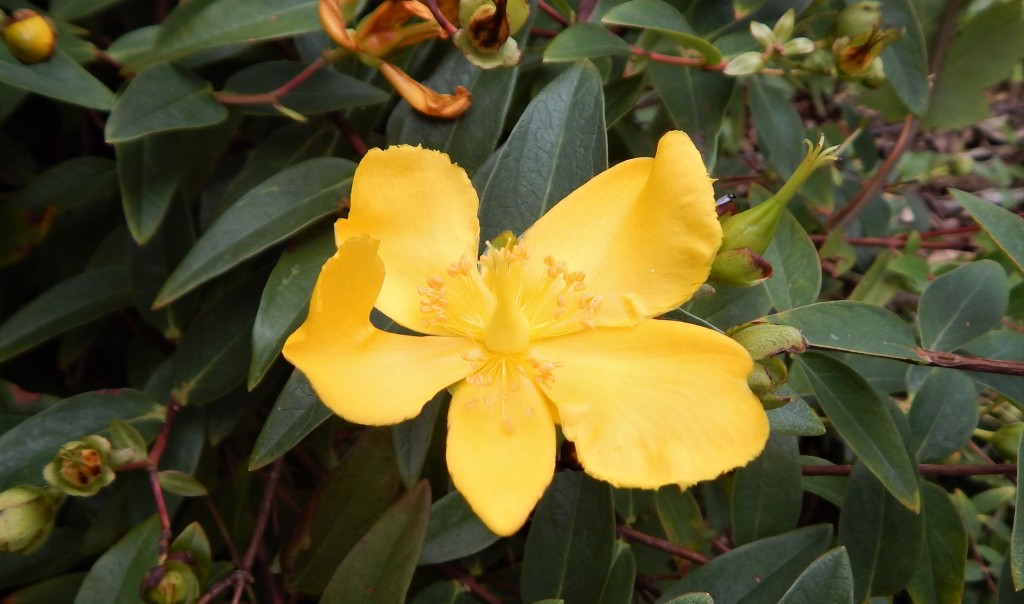
[181] Hypericum calycinum, Rose of Sharon
Introduction
Hypericum calycinum is a very common garden plant often used in hedges and sometimes called Rose of Sharon. It is also known as Aaron’s Beard, Great St-John’s Wort, Creeping St-John’s Wort and Jerusalem Star. To be honest, as a garden plant it is generally called Hypericum.
Rose of Sharon is commonly quoted as an example of the ambiguity of common names as it is also used for Hibiscus syriacus, Hibiscus rosa-sinensis and varieties of Malus domestica and Paeonia lactiflora. In some English versions of the Bible the expression Rose of Sharon is used for what may be a Crocus, Tulip, Narcissus (Daffodil) or Lilium candidum.
Taxonomy
Kingdom – Plants
Division – Vascular Plants
Class – Angiosperms (Flowering Plants)
Order – Malphigiales
Family – Hypericaceae
Genus – Hypericum
Section – Ascyreia
Scientific Name – Hypericum calycinum
Name
The name ‘Rose of Sharon’ appears in the Bible and seems to have been adopted by several plants with no justification. From another Biblical quotation, Aaron’s beard comes from the many stamens in the open flowers.
See tomorrow for St John’s Wort.
Hypericum is probably Latinized from the Greek hyper-eikon meaning above-picture, from the tradition of hanging plants over religious icons on that day. Calycinum comes from calyx, the botanical term for the sepals of the flower.
Description
Hypericum calycinum is described as a low growing, creeping bushy plant but cultivated varieties grow to the stature of a shrub and can be used as hedges. The stems are reddish. Leaves are dark green in what we think of as a typical leaf shape.
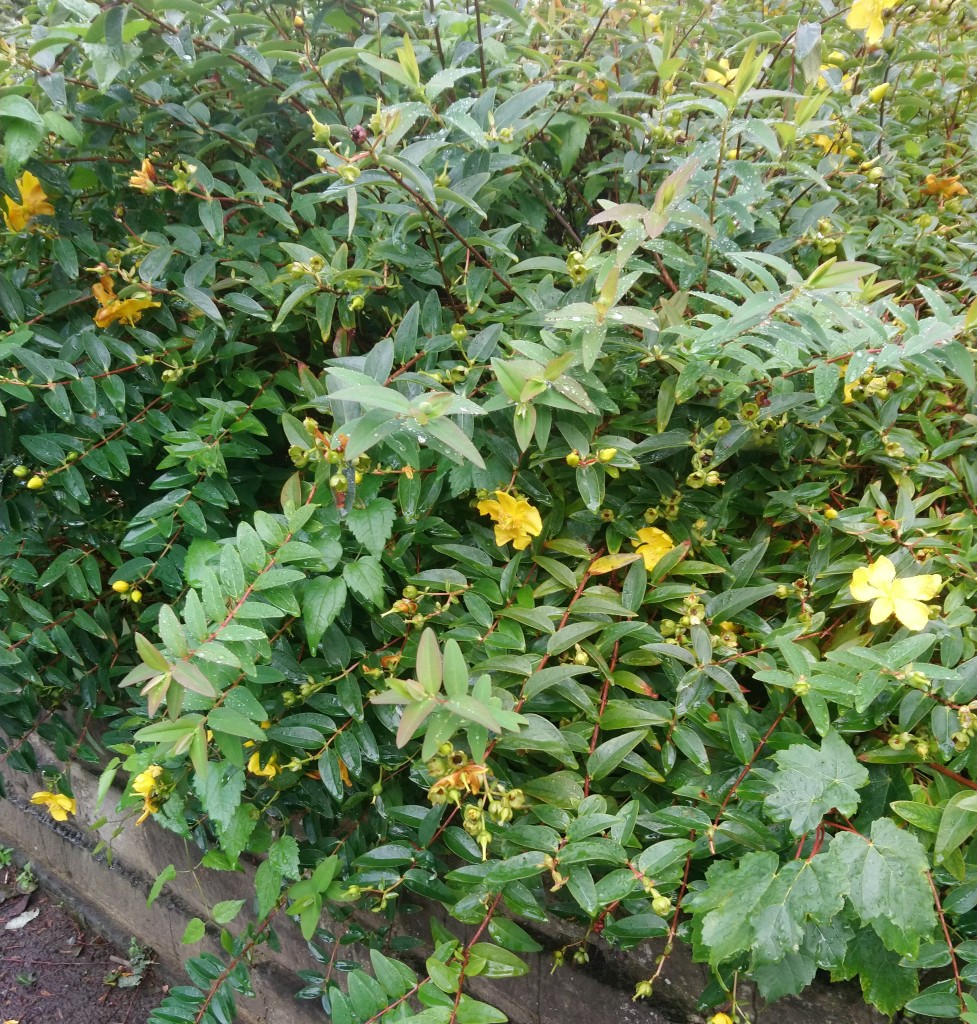
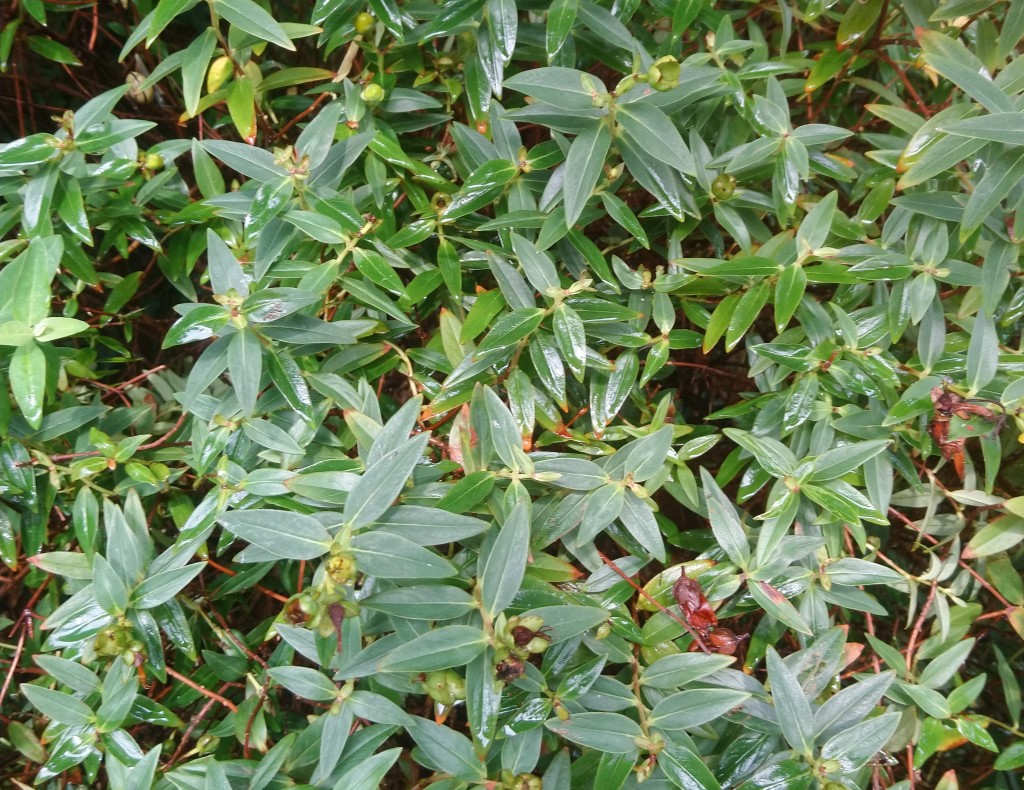

The undersides of the leaves ate net-veined.
Its distinctive flowers, which can be profuse and long-lasting, are fairly large, bright yellow and in the form of an open five-petalled star. There are many obvious long stamens.
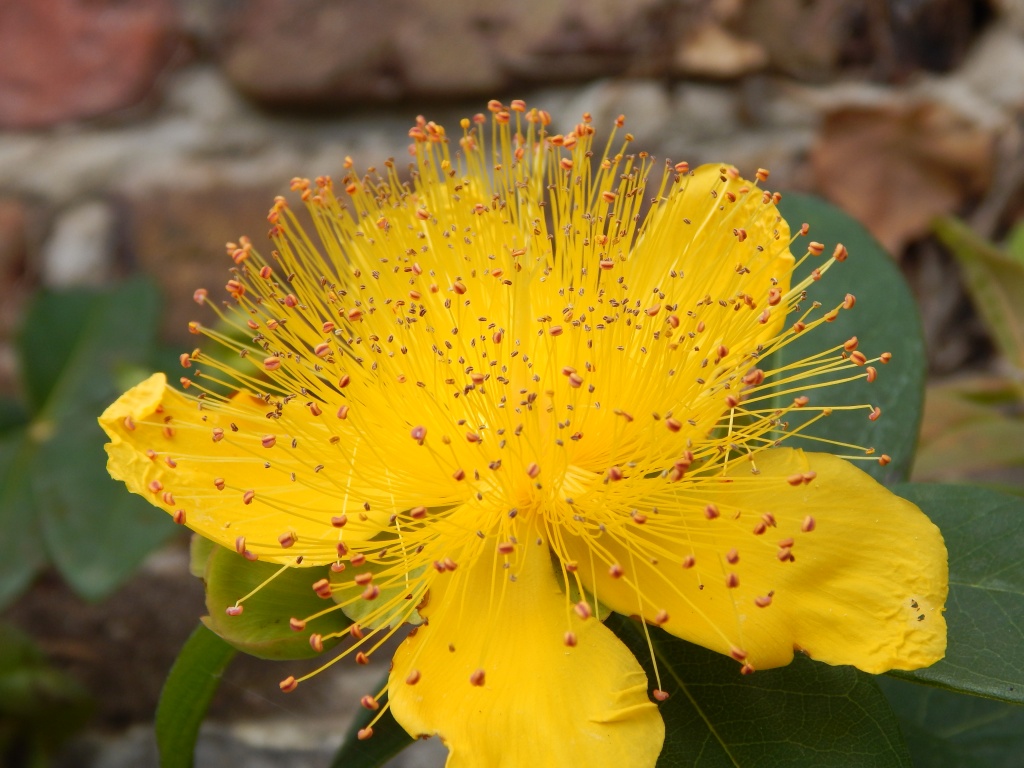
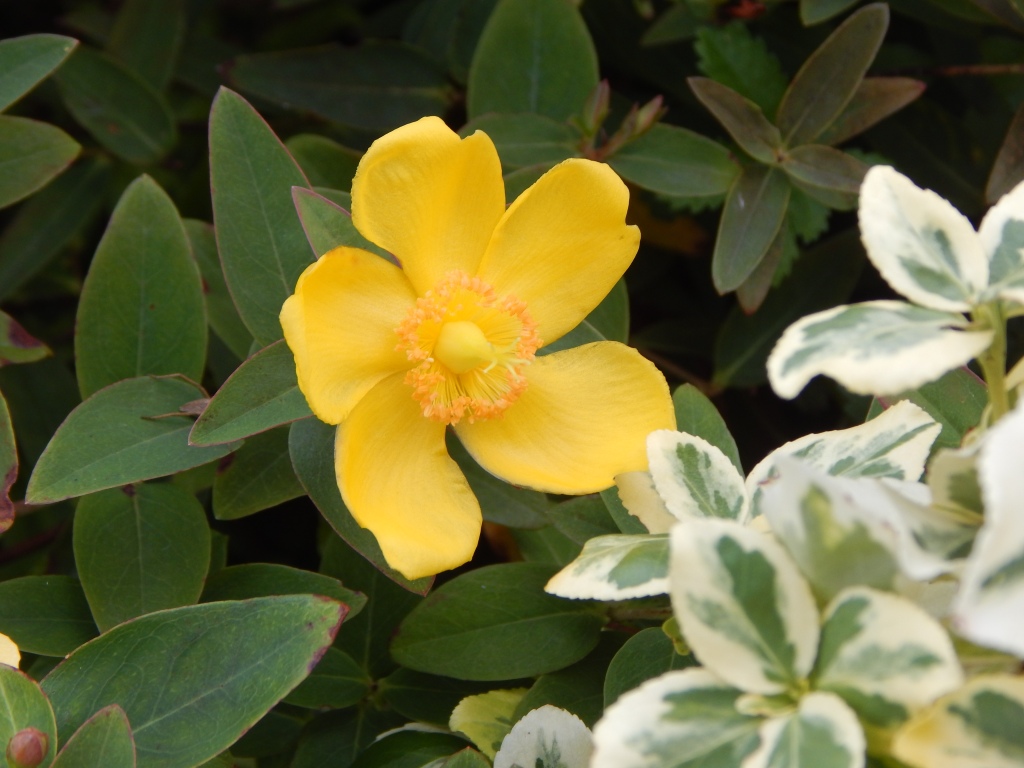

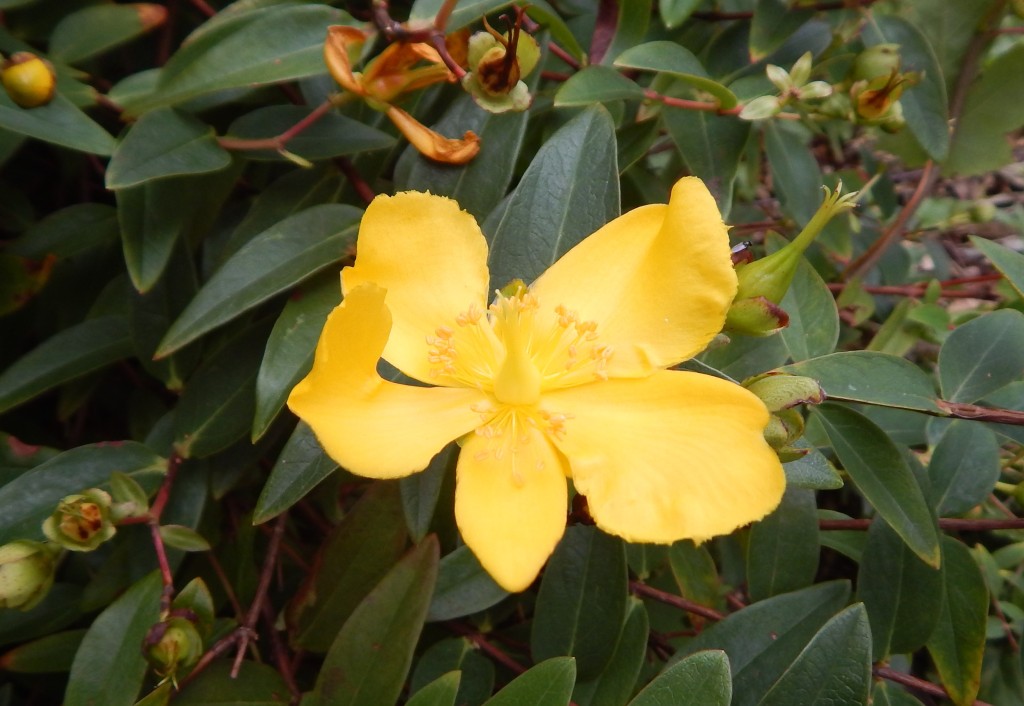
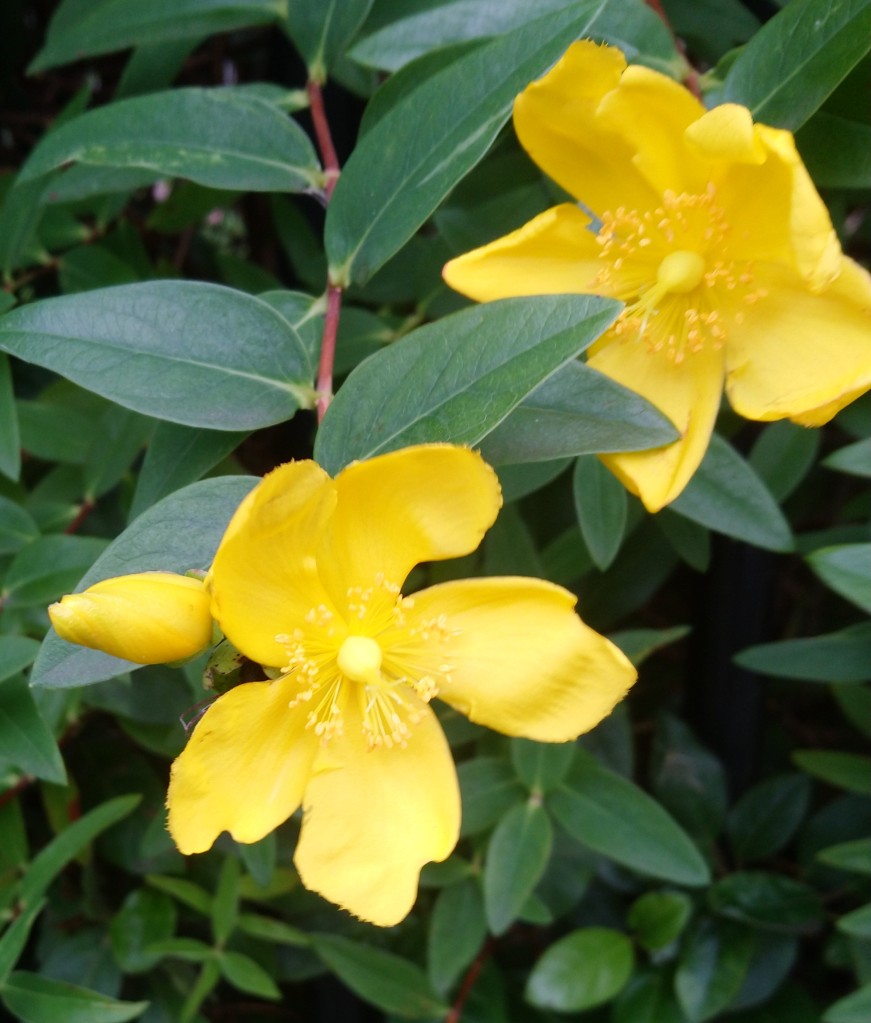
Fruits are in the form of a capsule which splits to release the seeds.
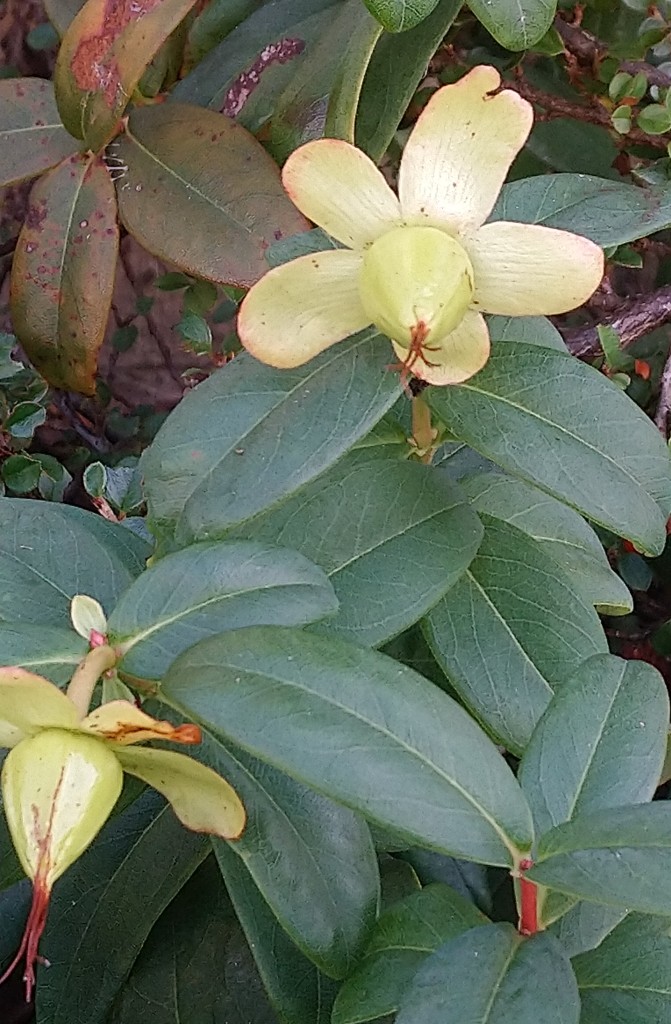
Habitat and use
Hypericum calycinum is native to Bulgaria and Turkey and adjacent areas.
It has been traditionally used as a herbal remedy to reduce muscle spasms and for asthma.
It is widely cultivated as a garden plant. Some of the five hundred species of Hypericum are also cultivated and there are many hybrids and cultivars. Almost all varieties have yellow flowers.
See also
We will see a wild relative, St John’s Wort, tomorrow.
